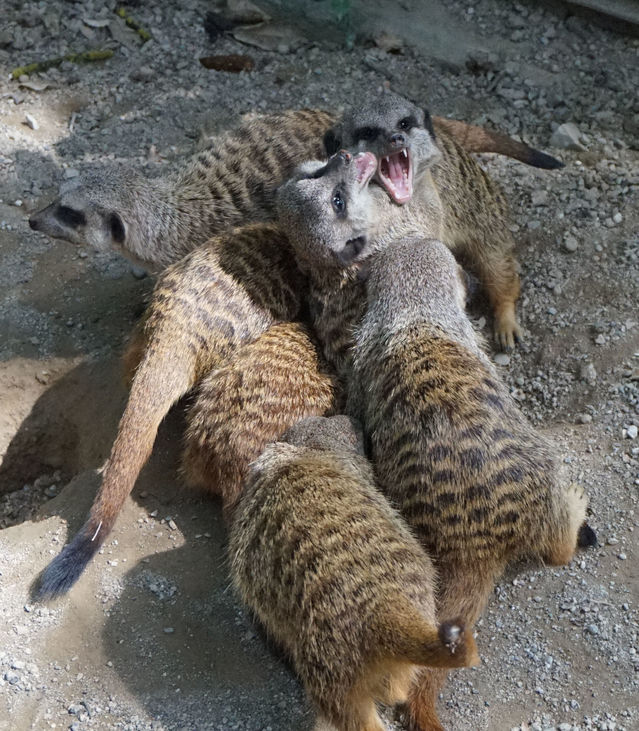Play
Playful Meerkats Mirror One Another’s Expressions
Play-fighting meerkats automatically mimic playmates’ facial expressions.
Posted June 26, 2019 Reviewed by Gary Drevitch

When two animals are play fighting, how do they avoid misunderstandings and communicate to one another that they’re not serious? One way is through visual signals that let play partners know it’s all in good fun.
In a recent study, University of Pisa ethologist Elisabetta Palagi and colleagues looked at playful facial communication in meerkats (Suricata suricatta). Meerkats are social carnivores that live in a cohesive and cooperative society – and they like to play. Meerkats of all ages engage in play, including play fighting. Palagi says their play seems to reflect their cooperative lifestyle, as it tends to be fair and symmetric.
In their observations of a captive colony of meerkats, Palagi and colleagues found that facial expressions are key to managing play sessions. In particular, meerkats make an expression known as the relaxed open mouth when play fighting. This is a well-known facial expression in other social carnivores, such as dogs and sea lions. It’s thought to be a ritualized signal that copies the intention of biting during play.
“This facial display regulates and fine-tunes play fighting, thus limiting the risk that the session will escalate into overt aggression,” says Palagi.
What’s more, the researchers found that meerkats rapidly and automatically mimic the relaxed open mouth faces made by playmates. Through a phenomenon called rapid facial mimicry, animals let their playmates know that they see and understand their playful intentions. Rapid facial mimicry has been linked to emotional contagion, one of the most basic forms of empathy. Through rapid facial mimicry, animals can share their playful, positive mood with their playmate.
In meerkats, play fighting sessions lasted longer if animals copied each other’s relaxed open mouth faces. Plus, animals that were friends copied one another’s play faces more than animals that weren’t socially close.
While meerkats have been extensively studied for their complex vocal repertoire and acoustic communication, the role of visual communication in their lives has been largely neglected. Palagi and colleagues’ findings suggest that visual signals, specifically facial expressions, are a key mediator of playful interactions in these animals. But this might just be the beginning of the story.
“I would like to join our data on visual communication with data coming from acoustic communication,” says Palagi. “I think that multimodal signals are extremely important in this species.”
A species as socially sophisticated and playful as meerkats may have evolved many signals around play, in several different sensory modalities. Further studies of both captive and wild groups could reveal the hidden language of play in these animals.
References
Palagi, E., Marchi, E., Cavicchio, P., and Bandoli, F. (2019). Sharing playful mood: Rapid facial mimicry in Suricata suricatta. Animal Cognition. Doi: 10.1007/s10071-019-01269y.


